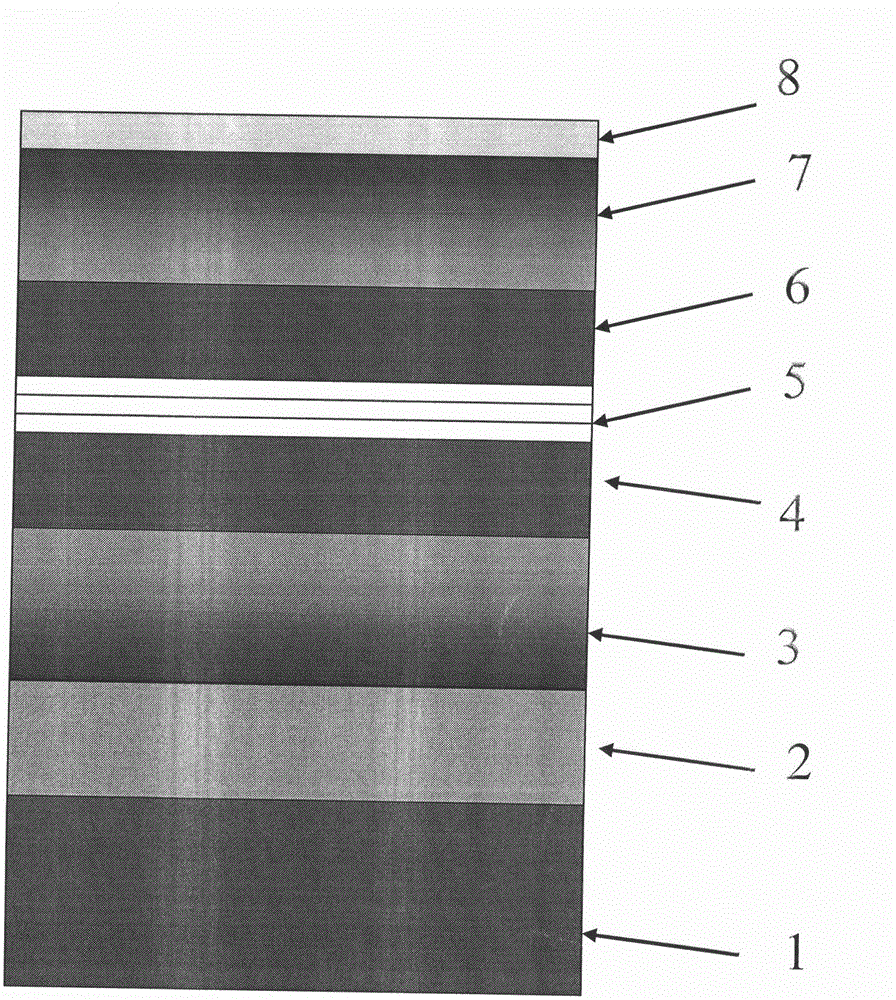High-wavelength antimonide semiconductor laser structure
A laser and antimonide technology, applied in semiconductor lasers, lasers, laser parts, etc., to improve structural efficiency, reduce optical mode loss, and improve performance
- Summary
- Abstract
- Description
- Claims
- Application Information
AI Technical Summary
Problems solved by technology
Method used
Image
Examples
Embodiment Construction
[0008] like figure 1 As shown, a long-wavelength antimonide semiconductor laser structure includes:
[0009] The substrate 1 has a (100) orientation and a Te doping concentration of 1 to 2×10 18 cm -3 GaSb crystal material.
[0010] GaSb buffer layer 2, growth temperature 560°C, Te doping concentration 2×10 18 cm -3 , thickness 1 μm.
[0011] Al x Ga 1-x Sb lower confinement layer 3, grown at a temperature range of 540-560°C, doped with Te at a concentration of 1×10 19 cm -3 -3×10 18 cm -3 , growing 1.2 μm. Using variable Al composition and segmented-gradient doping design and growth, combined with figure 1 It shows that from the direction of layer 3 to layer 4, the Al composition x changes from 0.9 to 0.75 at the first growth thickness of 0.7 μm. The doping concentration is changed from 1×10 19 cm -3 Change to 5×10 18 cm -3 . For the thickness of 0.5 μm grown next, the Al composition x changes from 0.75 to 0.45, and the doping concentration changes from 5×10...
PUM
 Login to View More
Login to View More Abstract
Description
Claims
Application Information
 Login to View More
Login to View More - R&D
- Intellectual Property
- Life Sciences
- Materials
- Tech Scout
- Unparalleled Data Quality
- Higher Quality Content
- 60% Fewer Hallucinations
Browse by: Latest US Patents, China's latest patents, Technical Efficacy Thesaurus, Application Domain, Technology Topic, Popular Technical Reports.
© 2025 PatSnap. All rights reserved.Legal|Privacy policy|Modern Slavery Act Transparency Statement|Sitemap|About US| Contact US: help@patsnap.com

